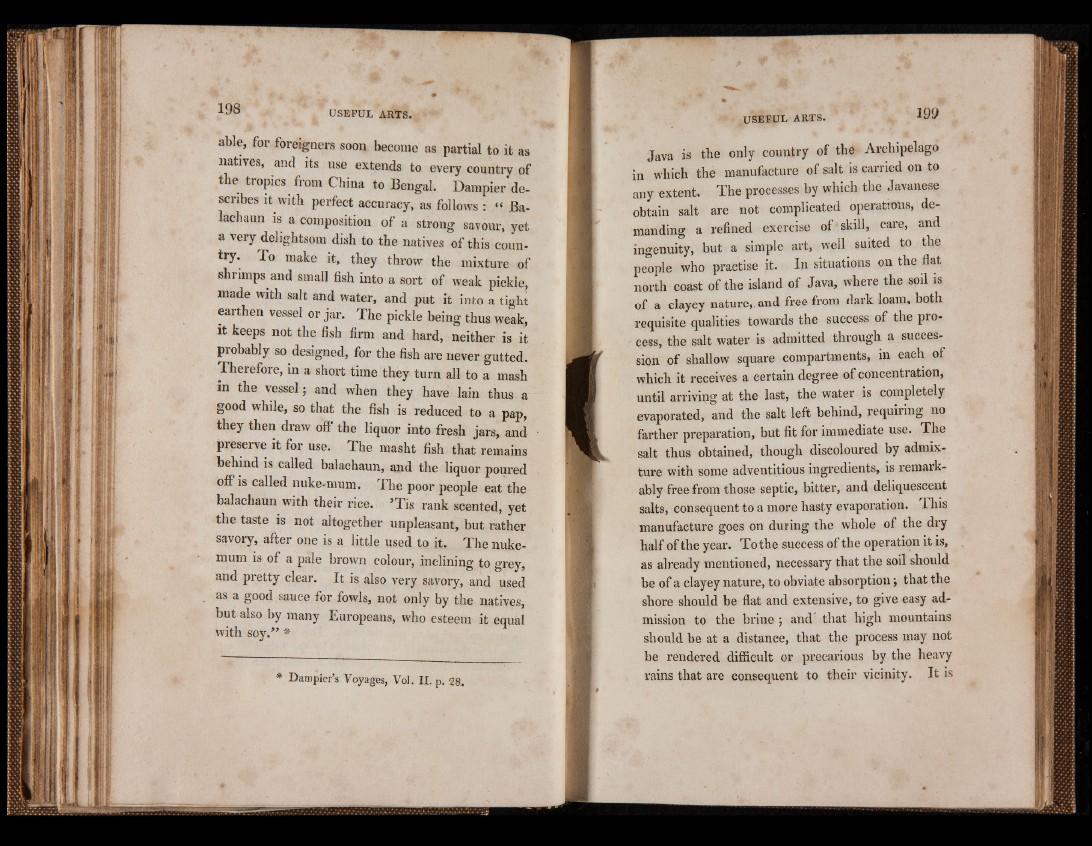
able, for foreigners soon become as partial to it as
natives, and its use extends to every country of
the tropics from China to Bengal. Dampier describes
it with perfect accuracy, as follows : “ Ba-
laehaun is a composition of a strong savour, yet
a very delightsom dish to the natives of this country.
To make it, they throw the mixture of
shrimps and small fish into a sort of weak pickle,
made with salt and water, and put it into a tight
earthen vessel or jar. The pickle being thus weak,
it keeps not the fish firm and hard, neither is it
probably so designed, for the fish are never gutted.
Therefore, in a short time they turn all to a mash
in the vessel; and when they have lain thus a
good while, so that the fish is reduced to a pap,
they then draw off* the liquor into fresh jars, and
preserve it for use. The masht fish that remains
behind is called balachaun, and the liquor poured
off* is called nuke-mum. The poor people eat the
balachaun with their rice. JTis rank scented, yet
the taste is not altogether unpleasant, but rather
savory, after one is a little used to it. The nuke-
mum is of a pale brown colour, inclining to grey,
and pretty clear. It is also very savory, and used
as a good sauce for fowls, not only by the natives,
but also by many Europeans, who esteem it equal
with soy.” *
* Darnpier’s Voyages, Vol. II. p. 28.
Java is the only country of the Archipelago
in which the manufacture of salt is carried on to
any extent. The processes by which the Javanese
obtain salt are not complicated operations, demanding
a refined exercise of skill, care, and
ingenuity, but a simple art, well suited to the
people who practise it. In situations on the flat
north coast of the island of Java, where the soil is
of a clayey nature,, and free from dark loam, both
requisite qualities towards the success of the pro
cess, the salt water is admitted through a succession
of shallow square compartments, in each of
which it receives a certain degree of concentration,
until arriving at the last, the water is completely
evaporated, and the salt left behind, requiring no
farther preparation, but fit for immediate use. The
salt thus obtained, though discoloured by admixture
with some adventitious ingredients, is remarkably
free from those septic, bitter, and deliquescent
salts, consequent to a more hasty evaporation. This
manufacture goes on during the whole of the dry
half of the year. To the success of the operation it is,
as already mentioned, necessary that the soil should
be of a clayey nature, to obviate absorption j that the
shore should be flat and extensive, to give easy admission
to the brine ; and that high mountains
should be at a distance, that the process may not
be rendered difficult or precarious by the heavy
rains that are consequent to their vicinity. It is